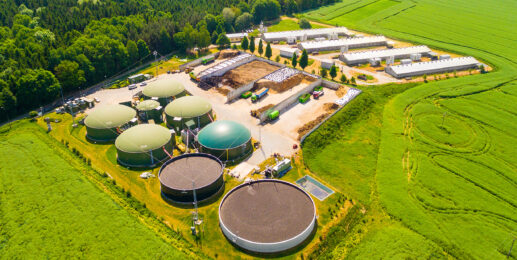
We’re all familiar with the sizzling summer droughts that parch much of Europe: hosepipe bans, empty reservoirs, and even wildfires have sadly become an all-too-common stamp year after year. Fewer people will know, however, that over the past months, Europe has been facing a different yet equally serious weather phenomenon: a wind drought.
What is a wind drought – and why do they matter?
Simply put, wind droughts are extended periods of time with unusually low wind speeds. For countries which rely heavily on wind energy, such as the UK, Germany, Denmark, and the Netherlands, wind droughts may pose a serious challenge for energy resilience, market stability, and their own climate goals, especially considering the EU’s 42.5% renewable energy binding target for 2030.
As wind, hydro, and solar energy become an increasingly important part of countries’ energy mixes, even supplying 100% of countries’ energy demand on specific days, can wind droughts jeopardise Europe’s renewable energy commitments?
How wind droughts affect energy markets
Despite the gloom and doom, it’s important to note that this is not an isolated weather phenomenon: in 2021, high-pressure systems stalled over Northern and Western Europe for weeks, cutting wind generation by up to 30% in some regions. The result was a sharp pivot to gas, coal, and nuclear power, spiking energy prices and increasing carbon emissions.
Wind droughts are caused by large-scale atmospheric patterns, with especially persistent high-pressure systems that disrupt typical wind flow. Now, meteorologists are increasingly examining whether climate change is altering atmospheric circulation patterns, such as jet streams, in ways that could make wind droughts more common. In this context, understanding and preparing for such variability is key to navigating renewable energy markets.
“Companies can also hedge against the weather, stabilising cash flows and thus reducing the financial impact of climate variability. Diversification, however, must be front and centre of any effective strategy to mitigate wind droughts.”
To do so, companies must recognise that wind droughts have ripple effects across a variety of fronts. With renewable power and wind energy specifically supplying a larger amount of energy throughout European electricity grids, a sudden drop in wind power production causes national grids to face higher volatility and have a higher reliance on other energy sources, such as fossil fuels.
This way, a reduction in wind energy not only causes power prices to soar during periods of volatility, but also for carbon emissions to increase, jeopardising net-zero commitments. Additionally, volatile prices can have knock-on effects on wind energy contracts like PPAs and wind derivatives contracts, risking companies’ hedging strategies and price risk exposure.
How to use diversification to mitigate against wind drought risk
Fortunately, industry players are increasingly aware of how to mitigate these risks and have several strategies at their disposal. Forecasting technology is progressing to better model weather and energy demand. Together with increased energy storage to smooth out supply fluctuations, this allows companies to prepare ahead of time for low energy output and reduce price shocks. Companies can also hedge against the weather, stabilising cash flows and thus reducing the financial impact of climate variability.
Diversification, however, must be front and centre of any effective strategy to mitigate wind droughts. Often, periods of high pressures with low wind results in higher levels of solar energy. In order to reduce wind drought risk, companies must integrate solar and hydro to their renewable energy inputs to ensure that volatility in one market will not affect their overall energy portfolio.
“A reduction in wind energy not only causes power prices to soar during periods of volatility, but also for carbon emissions to increase, jeopardising net-zero commitments.”
If this wind drought shows us anything, it’s not that wind and other renewables are unreliable, but that climate variability demands adaptability and more resilient energy systems. Market participants must increasingly look across regions, instruments, asset classes, and energy sources to balance exposure and ensure long-term performance. Diversification, flexible infrastructure, and strategic planning are essential to ensuring that clean energy can remain reliable, even when the wind doesn’t blow.
How Marex can help you navigate environmental markets
With a diversified environmental offering spanning physical and financial markets, and a strong track record of supporting market participants across renewable energy, biofuels and carbon markets, Marex’s CSC Commodities is well positioned to support clients through volatility.
With market making capabilities across renewable energy, access to global markets, and with the ability to structure innovative solutions in emerging sectors, we are ready to support clients throughout periods of market instability.
Contact CSC’s team to learn more about how we can help you navigate today’s European renewable power and environmental markets.





